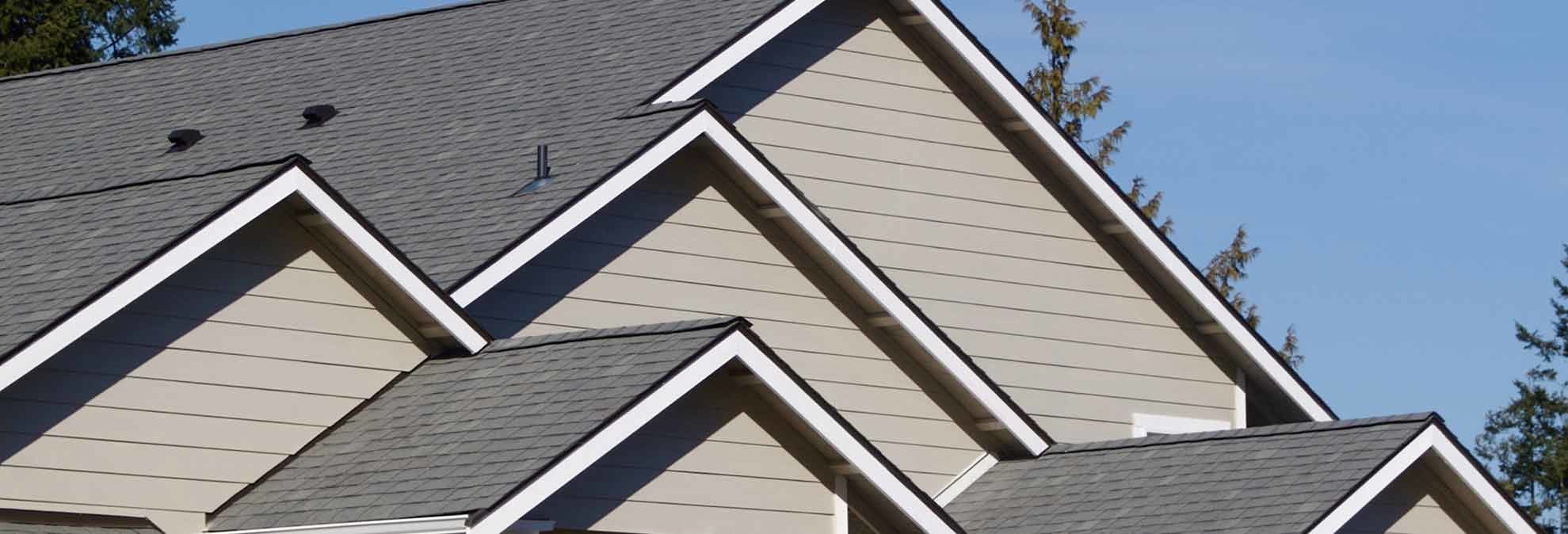
Roofing Buying Guide

Any part of your house’s exterior can get assaulted by wind, rain, hail, bitter cold, intense heat, strong sunlight, and other weather insults. But your roof typically gets the worst of it. Things fall from the sky. Things fall from trees. The sun beats down. A roof that can take the hits beautifully, year after year, is a worthwhile investment.
And it’s potentially very expensive. According to estimates by HomeAdvisor, an online home services aggregator, the cost to reroof a home ranges from $5,867 to $13,211, with the national average at $9,513.
Roofing materials take many forms, from metal to natural slate, but asphalt shingles are the most common residential roof covering in the U.S.
Consumer Reports tests both asphalt and metal shingles for strength and resistance to wind and impact from falling objects. We also test asphalt for nail pull-throughs and metal shingles for corrosion. But no matter what type of roofing you seek, the following guide will help you find the right product and hire the best contractor to install it.
How Do You Know That You Need a New Roof?
When a roof is destroyed by fire, windstorm, hail, or other severe weather, there’s no denying it needs to be fixed. But often, the signal that your roof needs repair or replacement is nothing more than a seemingly innocent ceiling stain or drip. Caught early, a small leak can be fairly inexpensive to fix. If ignored, it may result in significant damage to your house.
Sometimes, if you have an unfinished attic and can find the water trickle along a rafter or stud, you can find the leak’s source yourself. But it’s best to have an experienced roofer inspect and handle the repairs. We don’t recommend that homeowners navigate steep ladders and pitched roofs themselves.
The remedy may be as simple as filling in a crack with caulk, replacing a few shingles, or installing some flashing (a waterproof membrane or metal sheet that redirects water). Most leaks can be stopped if they’re limited to a few spots. But if you’re experiencing recurring leaks and your roof is out of warranty, a new roof is in order. Even without obvious signs of damage, it’s wise to replace an out-of-warranty roof that’s more than 20 years old.
Keep in mind that even if your roof needs replacing, you may be able to replace only one side of it rather than the entire surface; that’s something to discuss with a contractor. If new shingles can be laid on top of the old ones, you’ll save money over having the old shingles torn off and starting from scratch. But you or the contractor should check with your municipality to see what’s permitted; if two layers are already installed, you might not be allowed to add another.
Choosing the Right Roofing Material
Asphalt shingles remain far and away the most popular choice for houses because they’re relatively inexpensive and easy to install.
In CR’s roofing tests, we’ve found that some asphalt shingles perform better overall than others that cost more. And some provide a beautifully layered look or come in a huge array of colors. But depending on your house and your budget, many other roofing types may work as well. Metal shingles, for example, cost more than asphalt but tend to last longer and can provide a similar look.
To help you compare, we’ve included a price range for each of the options below per square, or 100-square-foot area, that manufacturers use when pricing shingles. Except where noted, prices are for materials only, not installation.
Types of Roofing Materials
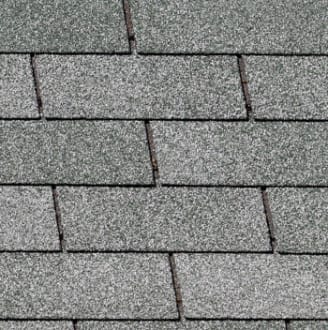
Asphalt Roofing Shingles
Price: $100 to $600 per square
Asphalt shingles are made of fiberglass sandwiched between asphalt and ceramic granules. The asphalt, often mixed with minerals, is waterproof, while the fiberglass provides strength. The ceramic granules give shingles their color and also help deflect UV light, which has damaging effects.
Relatively lightweight, inexpensive, and easy to install, asphalt shingles are the best choice for most houses. They come in sheets to give the illusion of more expensive single shingles, such as cedar and slate.
Asphalt shingles fall into three basic categories. Standard, entry-level three-tab shingles are the cheapest and thinnest. Architectural shingles are a step up from three-tab shingles. They’re slightly thicker and made to resemble more expensive wood shakes. Multilayered architectural shingles are the most expensive and thickest of the group, and look more like wood shakes. Only three-tab shingles can be installed over a single layer of existing shingles, but check with the manufacturers to make sure you’ll be entitled to the full warranty before you do that.
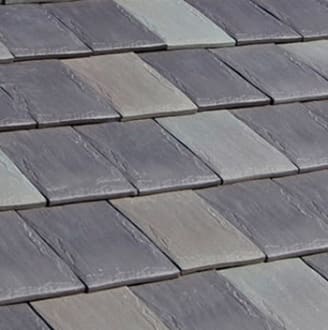
Composite Roofing Shingles
Price: $400 to $600 per square
Composite roofing material looks like real slate or wood, even close up, but it costs a lot less. And it weighs about the same as asphalt, so there’s no need to beef up the roof structure, as you would have to do to install slate. Made of a variety of compositions, including plastic/polymer, clay, rubber, and asphalt, composite roofing can be slippery. If you live in a snowy climate, consider installing snow guards to prevent sheets of ice from sliding down and injuring someone. Some composite shingles may fade or crack under impact.
Because composite roofing is a manufactured product, most roofing contractors can install it with a nailing strip. The warranties on composite roofing are generally comparable to those for asphalt shingles. Expect them to last anywhere from 20 to 50 years.
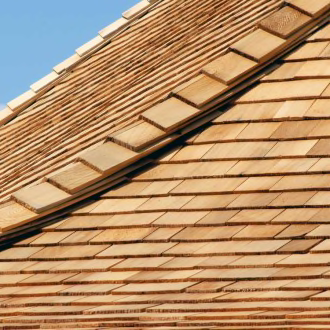
Cedar Roofing Shingles
Price: $600 to $1,600 per square
Nothing says rustic like cedar. This natural material is sold in traditional, smooth-faced roofing shingles and thicker and more textured shakes. Shingles are less costly; a 3,000-square-foot cedar-shingle roof would cost from $18,000 to $30,000 vs. $24,000 to $48,000 for cedar shakes, according to the home services aggregator Modernize.
Cedar is energy-efficient and durable, and resists insect infestation because bugs don’t like the smell. But cedar roofing needs to be properly treated to resist fire. The newer-growth cedar used today doesn’t have the same levels of fire-resistant resins as the cedar used in older roofs. Check with your municipality to find out whether you’re permitted to roof your home this way. Check, too, with your homeowners insurer. You may need to pay extra for coverage or use a different insurer.
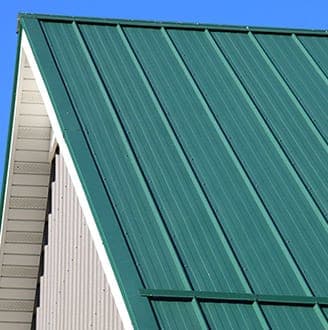
Metal Roofing
Price: $500-$2,500 per square, installed, according to the Metal Roofing Alliance
Metal roofing comes in steel, aluminum, copper, and alloy strips, and in various shapes and textures. Copper is especially expensive. Over time, copper acquires a greenish patina that some people find attractive.
Like composite shingles, metal roofing can be slick, so consider installing snow guards in cold climates to prevent sheets of ice from sliding off and injuring someone. A metal roof can be noisy during a rainstorm as drops of water ping against it. In the past, we’ve tested steel roofing and found that it can dent fairly easily, but options with a textured surface can mask small dents and dings quite well. Metal roofing effectively reflects the sun’s rays, so it keeps your home cooler in summer—a benefit in hot climates.
Make sure you hire a contractor who is familiar with the material, because installing metal is very different from putting on asphalt shingles. A metal roof can last anywhere from 50 to 100 years.
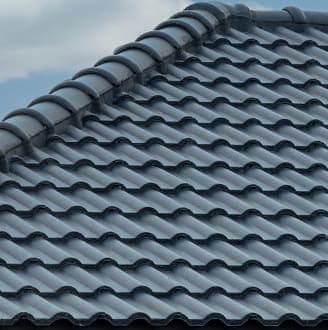
Metal Roofing Shingles
Price: $310-$500 per square
Like standing seam metal roofing, metal shingles are resistant to extreme weather and are long-lasting. But they’ve got a different design. They’re stamped metal panels made to mimic the look of other classic roofing styles, including asphalt shingles, clay tiles, or cedar shakes. That means metal shingles may be a good option if you want a more traditional look to your roof or if you have to abide by style guidelines set by an HOA.
Metal roofing shingles are most commonly made from steel or aluminum. They can withstand strong winds and take a beating from hail or other falling debris. They are also fire-resistant. Depending on the type and how the metal is coated, metal roofs can reflect enough heat from the sun to keep your home cooler and reduce energy costs. Plus, metal roofs are often made of recycled materials and are completely recyclable at the end of their life.
Despite the higher up-front cost, a metal roof is likely to be a cost-effective choice in the long run. Metal shingles can last from 40 to 50 years, or even longer.
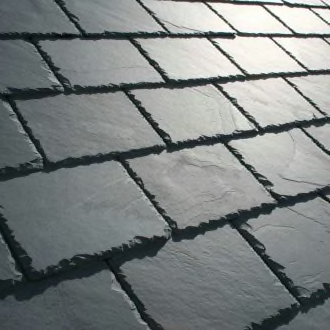
Slate Roofing Shingles
Price: $800 to $3,500 per square, installed
A well-laid natural slate roof has the rich look of the Old World. You’ll need a skilled, specialized roofer or mason to install real slate, and the overall costs, mainly reflected in labor, can be high: between $4,389 and $22,377, according to national averages collected by Angi, the home services aggregator.
Slate is naturally fire-resistant. It comes in two varieties: soft and hard. Both varieties can last decades—if not more than a century—but the soft variety is thinner and less durable.
As with terra cotta and concrete, this roofing type is heavy. If you’re building new or plan to change to this type of roof on an existing home, have a roofer or structural engineer make sure your home can support it. As a natural product, slate roofing doesn’t come with a manufacturer’s warranty. You’ll have to look carefully at the installer’s warranty to make sure you have adequate recourse if problems occur.
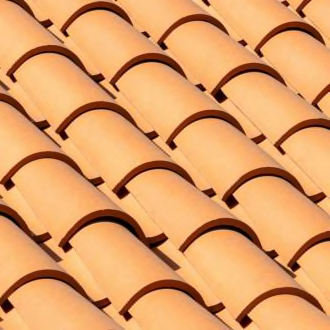
Concrete and Terra Cotta Roofing Tiles
Price: $1,070 to $2,750 per square for concrete, $900 to $2,600 per square for terra cotta, installed
Concrete tiles are made from a mixture of sand, cement, and water; terra cotta tiles are made of clay baked at very high temperatures. While terra cotta is typically associated with Mediterranean-style roofs with barrel-shaped tiles, it can be made into thinner, flatter shapes as well. That’s true, too, for concrete.
Both have significant advantages and drawbacks. Among the benefits: When they have the proper coatings or glazes, both are impervious to rotting, moisture, insects, and fire. They’re also relatively maintenance-free and very long-lasting; terra cotta roofs have lasted for hundreds of years in southern climates. These tiles are also good at deflecting the sun’s rays, making them energy-efficient.
But the downside is that they’re expensive. The national average to install a concrete roof on a 1,500-square-foot house, for instance, is $16,050 to $41,250, according to Modernize. You also shouldn’t use terra cotta tiles in areas with freezes and thaws, because those temperature changes can cause them to crack and break. When individual tiles get damaged—say, from a falling object—replacement can be tricky and costly. They also require special underlayments, which may need to be replaced before the tiles themselves do. And these roofs are heavy. If you’re building new or plan to change to this type of roof on an existing house, have a roofer or structural engineer make sure your home can support it.
How Do You Choose a Roofer?
Once you’ve decided on a roofing type, check the manufacturer’s website for contractor recommendations. A manufacturer’s credentialed contractors, in theory, have more training in installing the product. Your homeowners insurance company may also have a network of contractors. Look for those who have been around for at least five years and have a good local reputation.
With any roofer, get local references and check for local and state licenses, proof of bonding, a Better Business Bureau rating, and active certificates of insurance for liability and workers’ compensation.
Request bids from at least three pros. Roof replacement costs can vary widely, even when the exact same shingles will be installed. For asphalt shingles, prices range from about $75 to $105 per square for basic three-tab shingles, and up to $350 per square for multilayered architectural shingles. The cost of the shingles themselves should be similar no matter who installs them, but costs for labor and other materials are what you have to look out for when comparing bids.
Ask for a breakdown of all the costs involved. There should be one price for the shingles, one for the labor of removing the old ones and installing the new ones, and a contingency budget that outlines the costs if your roofer discovers that sheathing or other materials need to be replaced.
Some installers offer workmanship warranties separate and apart from a shingle manufacturer’s. Be sure to ask for one in writing. Among the dozens of contractor websites from across the U.S. that we reviewed, only a few showed explicit warranties. The promises we found covered between one and 50 years, though experts told us most roof problems happen in the first couple of years.
How Do You Compare Roofers' Bids?
Even though replacing a roof isn’t a do-it-yourself job, estimating the cost of the shingles themselves can be helpful when you’re comparing bids from roofers.
Manufacturers price roofing by the square, or 100-square-foot area, and that’s how we price each option in our ratings. To estimate how much roofing you’ll need, multiply the overall length and width of each roof section in feet, add the numbers for the sections together, and add 10 percent to allow for waste. Then divide by 100 to determine how many squares you’ll need. In addition to buying extra to account for waste, it’s a good idea to keep an additional bundle on hand for minor repairs. That way, you’re covered if the manufacturer stops making those shingles.
For example, for a one-story, 2,300-square-foot house with a medium-pitched roof, you’ll want to figure on about 30 squares to cover 3,000 square feet total. That should give you enough for waste and extra shingles for future repairs.
While manufacturers price their product by the square, roofing is generally packaged and sold in bundles. Generally, you’ll need three to five bundles of shingles to cover one square of your roof. The exact number of bundles required depends on the type of shingle you are buying; the heavier the shingle, the fewer you get per bundle. By law, each shingle bundle should state clearly how many square feet it covers, so you can calculate the number of bundles you need and budget accordingly.
What Should the Roofer's Bid Include?
Before giving you an estimate, a contractor should assess all components in and around your roof, including the drip edge and gutters that steer water runoff. In a complete roof repair or redo, you’ll typically need to replace the underlayment. That component, usually treated paper or synthetic sheets, serves as a weather barrier atop the sheathing or decking, which is the flat surface—typically made of oriented strand board or plywood—that lies on the rafters. In a cold climate, a roofer may suggest applying an ice-dam protection membrane in some areas to guard against water seepage caused by ice buildup. Adding or updating the ridge vent and vented soffits can improve attic airflow and prevent harmful moisture buildup. Replacing or fixing flashing, the material around the chimney and where roofing planes meet, can prevent leaks. Ask about alternatives to copper, which is durable and attractive but costly.
Ideally, ask for a contract that locks in the job’s pricing. If the contractor requires you to abide by a temporary clause making you responsible for interim price increases, make sure you understand how much you’ll be responsible for. And if you need the roof done right away, ask the contractor which shingle colors and styles are available now, so you’ll face minimal wait time. If the contractor doesn’t know, seek another roofer.
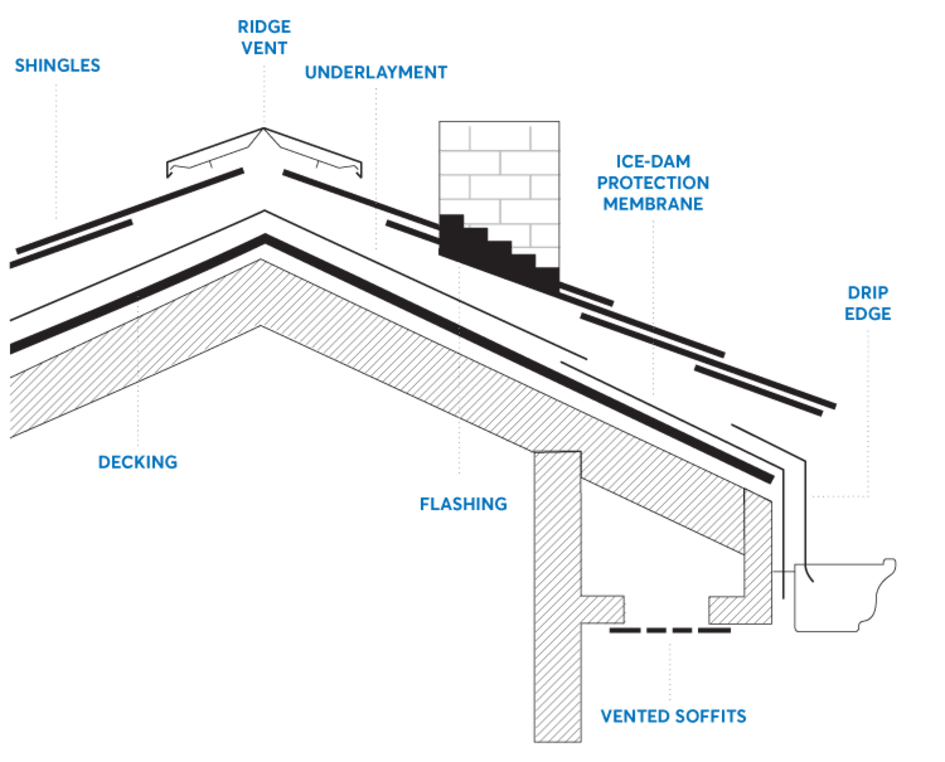
Illustration: Chris Philpot Illustration: Chris Philpot
What Should You Know About Roofing Warranties?
In your shingle shopping, you might be impressed by how many manufacturers offer a “lifetime protection” warranty. But in roofing parlance, a lifetime really isn’t a lifetime. It’s more like 10 years. That’s the period during which most manufacturers will pay the roof’s original owner in full to replace defective shingles under the baseline warranty. After that—and for the rest of the period you own your house—it’ll reimburse you only for your shingles’ depreciated value.
Warranties involve a lot of fine print like that. For instance, to extend the full-replacement period, you have to either upgrade to a different shingle or buy more of the manufacturer’s components. A roofing warranty won’t pay if the shingle maker finds problems in your home’s ventilation. And manufacturers usually won’t cover damage from so-called acts of God, such as very high winds and hail. For that, you’ll have to put in a homeowners insurance claim or pay out of pocket.
Given all those gotchas, a warranty probably shouldn’t be your main focus in choosing a new roof. Rather, our testers recommend that you place your faith in a strong shingle and a reliable contractor. That said, see whether the warranty is transferable to the next owner. If you sell your house, a transferable roof warranty can be a perk to a potential buyer.
The addition of solar panels can also affect your warranty. So if you think you might add solar panels to your new roof, check the warranty of the shingle you’re considering to make sure a solar-panel installation won’t void it. You should also check for insurance coverage from the solar panel company.
Trends in Roofing
As they have for years, asphalt shingles remain the most common type of residential roofing purchased in the U.S., says Kelly Moomey, the market analyst who covers roofing for Consumer Reports. “However, there are small, niche segments emerging,” she says.
Metal roofs, for instance, are expected to grow in popularity. The inherent advantages of this type of roof—including resistance to leaks and wind uplift, not to mention durability against the elements—are likely to make metal roofing more popular in areas prone to violent storms, according to the Freedonia Group, a market research company.
Here are some other trends we see in roofing:
Fewer choices, higher installation costs. Stung by supply-chain problems of the past few years, manufacturers have cut back on new styles and colors, our sources tell us. At the same time, historically high prices for roofing installations could continue to rise in the next year or so, largely due to continued high demand from consumers and a tight labor market. That’s made finding workers a challenge.
Solar roofing options are expanding. The major roofing manufacturers GAF and CertainTeed have joined Tesla in introducing photovoltaic—aka solar—roofing shingles for homes. CertainTeed’s Solstice Shingle looks more like a traditional shingle than GAF’s Timberline model, which includes perpendicular bars across the shingle array.
Federal tax credits apply to solar roofs, but for a limited time. Homeowners who retrofit their roofs with solar panels or solar roofing tiles now can get a federal tax credit of 30 percent of the project cost—with no income restrictions or dollar ceiling on the project—thanks to the Inflation Reduction Act of 2022. The credit was originally set to expire in 2032, but recent congressional action cut that short. The tax credit is now only good through the end of 2025, giving consumers who are thinking of going solar a very short time to act.
“Cool” (or light-colored) roofs are an option for sustainability. While this option isn’t new, it’s worth considering if you need a new roof and want to reduce your carbon footprint without buying costly solar. The trick: Pick a lighter color roof. Because a light-colored roof reflects more sunlight than a darker roof, it can reduce the energy and cost needed to cool your home by up to 15 percent.
White roofs are best, reflecting from 60 to 90 percent of sunlight, according to the Department of Energy. But you also can shop for a “cool colored” roof: a darker roof that uses specialized pigments that reflect about 30 to 60 percent of sunlight. (Check the DOE’s Energy Saver page for advice on buying cool-roof roofing products for both shallow-pitched and steeply pitched roofs, and check the Cool Roof Rating Council for cool-roof products.)
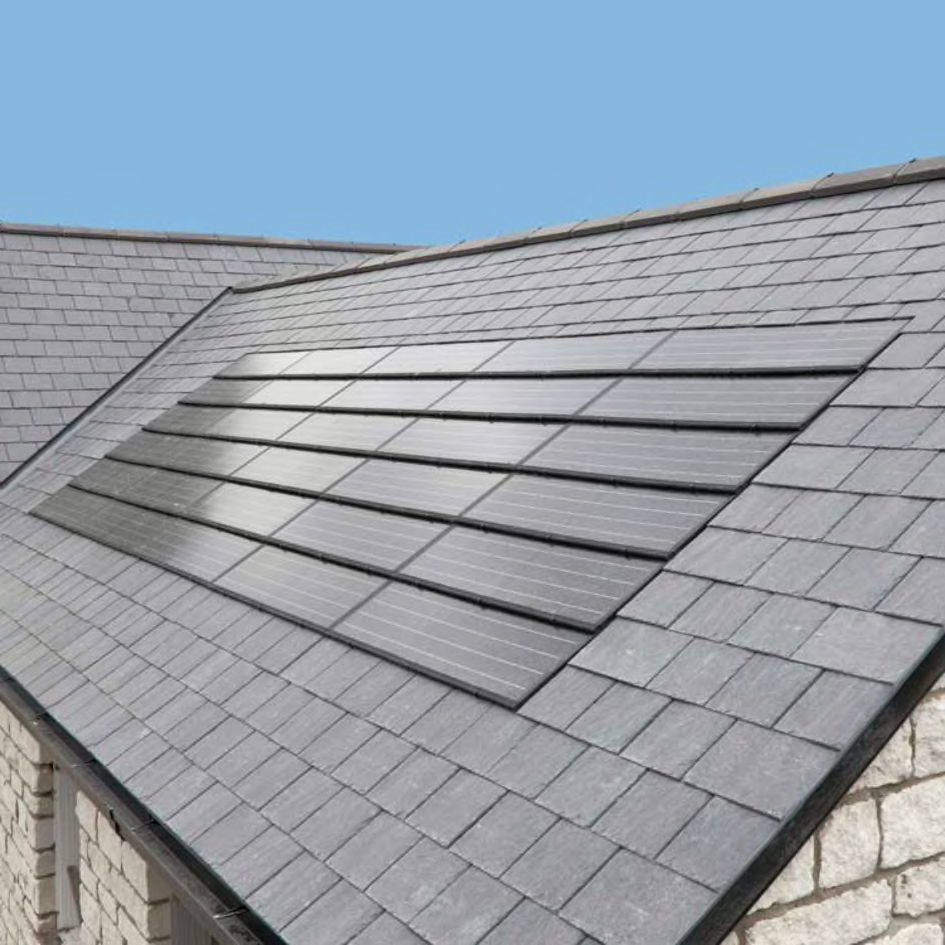
Photo: Getty Images Photo: Getty Images
Roofing Brands
Atlas Roofing makes all three types of asphalt shingles, and its more premium lines incorporate Scotchgard to resist mold and mildew.
CertainTeed makes asphalt shingles, as well as more premium metal and faux slate roofing.
GAF manufactures asphalt shingles and is one of the only brands to sell its products at home centers, including Home Depot and Lowe’s.
Iko, based in Canada, manufactures residential asphalt shingles for its North American market in three types: traditional three-tab, architectural laminate, and “premium designer” shingles that mimic slate and cedar shake.
Interlock roofing is one of the largest manufacturers of metal roofing, with options primarily made from aluminum and steel.
Owens Corning makes many tiers of roofing shingles and is one of the few brands that offers a lifetime warranty on certain lines, provided you use one of its licensed installers.
Tamko roofing primarily makes asphalt shingles for residential projects.
Tesla, the automaker, also manufactures and installs solar roofing shingles.



























